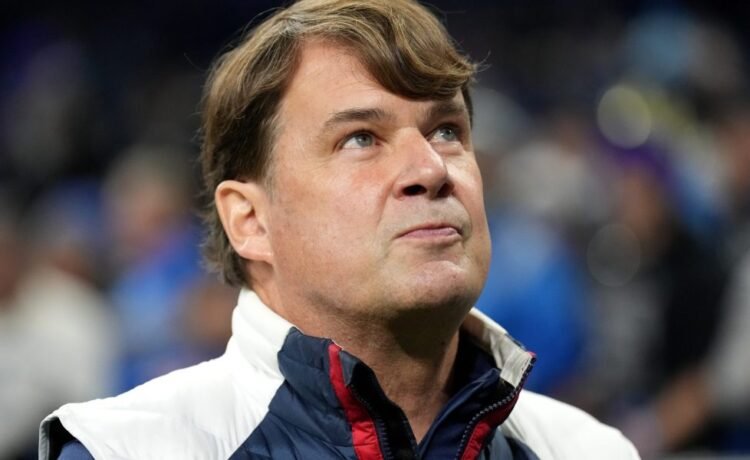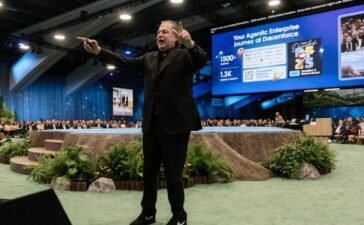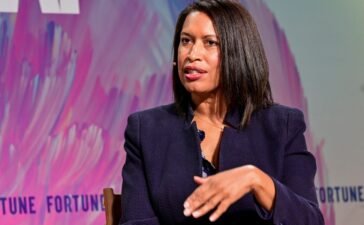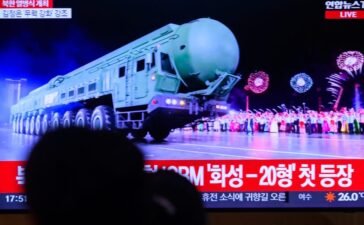
Ford CEO Jim Farley recently became the latest corporate boss to sound the alarm about artificial intelligence’s impact on workers.
During the Aspen Ideas Festival last week, he highlighted the importance of the “essential economy”—which he defined as everything that gets moved, built or fixed—while saying blue-collar skilled trades have been neglected.
The U.S. spends too little on vocational training, which is also geared more toward 1950 than 2050, contributing to a decline in blue-collar productivity, Farley explained, though the carmaker has been investing in training.
Meanwhile, demand for skilled trades is expected to surge, and even the AI boom will require workers to build and service the facilities that provide all the computing capacity that’s needed.
There’s already a massive shortage of trade workers, he added, estimating a deficit of 600,000 in factories and nearly half a million in construction, for example.
“There’s more than one way to the American dream, but our whole education system is focused on four-year [college] education,” Farley said. “Hiring an entry worker at a tech company has fallen 50% since 2019. Is that really where we want all of our kids to go? Artificial intelligence is gonna replace literally half of all white-collar workers in the U.S.”
His AI warning marked that latest from a top CEO about AI’s impact on the labor force, especially on office workers.
Last month, Amazon CEO Andy Jassy said the company’s corporate workforce will shrink in the next few years due to AI.
“We will need fewer people doing some of the jobs that are being done today, and more people doing other types of jobs,” Jassy wrote in a memo to employee. “It’s hard to know exactly where this nets out over time, but in the next few years, we expect that this will reduce our total corporate workforce as we get efficiency gains from using AI extensively across the company.”
In addition, Anthropic CEO Dario Amodei told Axios in May that AI could eliminate half of all entry-level white-collar jobs, sending the unemployment rate as high as 20% in the next five years. The latest employment report showed the jobless rate was at 4.1% in June.
There are already signs that AI is threatening the types of jobs that historically have served as stepping stones for young workers.
LinkedIn’s chief economic opportunity officer, Aneesh Raman, pointed out in May that AI tools are doing the types of simple coding and debugging tasks that junior software developers did to gain experience. AI is also doing work that young employees in the legal and retail sectors once did.
For his part, Ford’s CEO sought to draw attention to the opportunity in skilled trades, noting that more Americans are also considering trade school than a four-year college.
“We all sense that America can do better than we are doing,” Farley said last week. “We need a new mindset, one that recognizes the success the importance of this essential economy and the importance to our vibrancy and sustainability as a country.”
You Might Also Like
Salesforce revamps its ‘Agentforce’ offerings to try to pull customers across the gap between AI capabilities and AI adoption
Hello and welcome to Eye on AI. In this edition…A breakdown of the AI news from Salesforce’s Dreamforce…OpenAI debuts its...
The Marines will fire live artillery over a major freeway for a 250th birthday celebration to be attended by JD Vance, forcing the I-5’s closure
A plan to fire live artillery shells over a major Southern California highway as part of a military showcase attended...
Washington D.C. Mayor Muriel Bowser says fear of ICE is disrupting business: ‘People aren’t going to work’
Cuts from the Department of Government Efficiency (DOGE) and the deployment of National Guard troops have left a lingering sting...
North Korea unveils new intercontinental ballistic missile that may be tested in coming weeks
At a massive military parade attended by foreign leaders, North Korean leader Kim Jong Un rolled out his nuclear-armed military’s most powerful...










